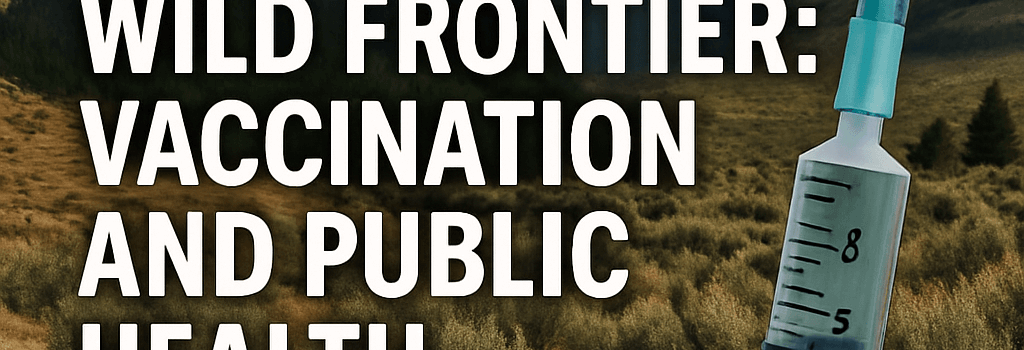Idaho’s Wild Frontier: Vaccination and Public Health Implications

Updated: June 2024
Overview: When Public Trust and Data Infrastructure Collide
Idaho’s Panhandle Health District (PHD) has joined the vanguard of national debates over vaccination policy, public health authority and data-driven decision-making. Once a quiet rural region, northern Idaho is now a laboratory for testing how changes in legal mandates, digital infrastructure and epidemiological modeling reshape immunization rates and community resilience against outbreaks.
Section I: Anatomy of a Local Policy Shift
From Radiology to Rural Health Governance
Thomas Fletcher, a retired radiologist and PHD board chair since mid-2023, embodies the shift. After moving from Texas in 2016, Fletcher joined PHD’s seven-member board and leveraged his clinical background to demand “full disclosure” on vaccine risk–benefit ratios. His emergence on platforms like Substack and alliance with Robert F. Kennedy Jr.’s Make American Healthy Again (MAHA) coalition catalyzed a policy debate over informed consent.
Idaho Medical Freedom Act: Legislative Milestone or Risk Vector?
Signed by Gov. Brad Little in April 2024, the Idaho Medical Freedom Act prohibits schools, businesses and agencies from mandating vaccinations or masks—except for a symbolic school-entry carveout. Technically, kinder- garteners still require six core vaccines (DTaP, Polio, MMR, Varicella, Hepatitis B, Hib), but 15% nonmedical exemption rates in 2023 data reveal the law’s practical impact.
Section II: Technical Specifications and Epidemiological Modeling
Herd Immunity Thresholds and R₀ Calculations
For measles (R₀≈12–18), the herd immunity threshold exceeds 92–95%. PHD’s 2023–24 kindergarten MMR coverage of 65% vastly undercuts that target. Stochastic Susceptible-Infected-Removed (SIR) models run on open-source platforms (e.g., EpiModel in R) project a >50% chance of a measles outbreak within two years at current rates.
Interoperability: Immunization Information Systems (IIS) and HL7 FHIR
Statewide IIS platforms aggregate shot records from clinics, pharmacies and schools. Idaho’s system, built on an HL7 FHIR API, supports real-time queries of vaccine status. However, PHD reports a 20% failure rate in data submission, due to disconnected EMR modules and noncompliance with FHIR Immunization resource profiles. Improvements—such as automated CCD exports from Epic and Cerner—could close the gap.
Section III: Legal, Ethical and Operational Considerations
Liability and Informed Consent Documentation
- Defining “material risk” under Idaho Code §39-1001.
- Drafting board-approved vaccine information sheets (VIS) vs. third-party alternatives.
- Assessing malpractice exposure for PHD clinicians vs. private providers.
Legal counsel warns that a bespoke PHD VIS could invite negligence claims if it omits CDC-verified side-effect frequencies (e.g., 1 in 1,000,000 risk of anaphylaxis for MMR).
Section IV: Comparative and International Perspectives
Lessons from Denmark and Sweden
Denmark achieved >95% MMR coverage by coupling electronic appointment reminders and zero-exemption policies for preschool. Their digital immunization passports, based on blockchain prototypes with SHA-256 hashing, ensure tamper-proof records. Sweden’s centralized Public Health Agency deploys weekly interactive dashboards (Grafana/Prometheus) to track regional vaccination uptake and outbreak alerts.
U.S. State Variability and Policy Outcomes
- West Virginia: Failed 2024 exemption-expansion bill; MMR coverage 92%.
- Louisiana: Surgeon General order halting vaccine recommendations; coverage dipped to 83%.
- California: Elimination of personal belief exemptions since 2016; sustained > 96%.
Section V: Rebuilding Trust Through Technology and Community Engagement
Data Transparency Portals
Public dashboards—leveraging open data standards (CSV, JSON)—allow parents to visualize vaccination rates by ZIP code, school district and cohort. Early pilots in Washington State cut exemption rates by 30% within one year.
AI-Powered Chatbots for Vaccine Education
In partnership with a University of Washington team, PHD is evaluating a GPT-4–based chatbot trained on peer-reviewed literature to answer parental queries. Initial accuracy testing shows 87% F1 score for correctly categorizing side-effect inquiries vs. misinformation flags.
Conclusion: Idaho’s Experiment and the National Stakes
Idaho’s Panhandle Health District may be small—280,000 residents scattered across five counties—but its policy debates echo nationwide. From R₀ modeling to HL7 interoperability, from legal frameworks to AI-assisted education, this frontier highlights the complex interplay of technology, law, and public trust. As outbreaks loom, the question remains: can informed consent policies, powered by robust data systems and transparent communication, restore confidence and protect communities?
“Even if we lose, every conversation moves the needle on public sentiment,” PHD Chair Thomas Fletcher said in July 2024. “Local efforts can scale into a broader revolution in health freedom and data transparency.”